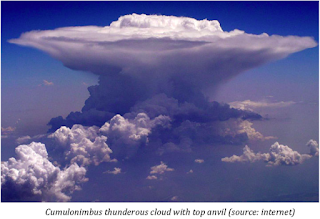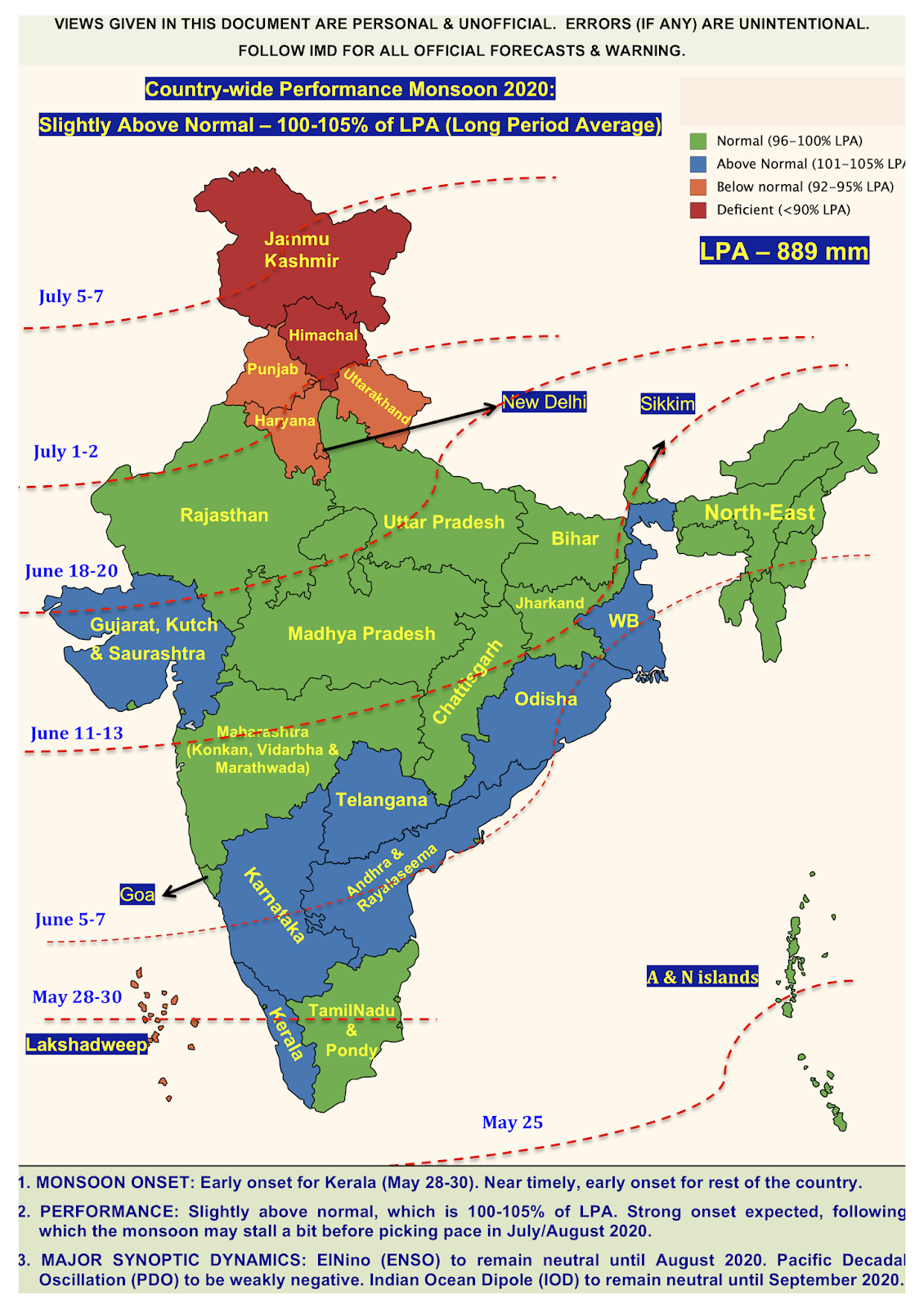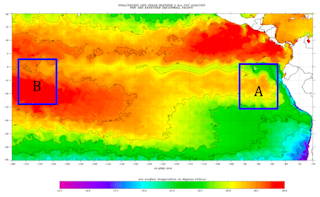A tale of storms - thunder & dust
Over the past couple of weeks, stormy weather has gripped India, especially north India and to some extent south and north-east India (although not covered in the news as much as the thunder-and dust-storms in north India). The central and western regions have been undergoing somewhat of a lull period with no significant activity. Press coverage on recent storms can be accessed at -
Although thunderstorms are a common feature during the summer time, the freak event that occurred on May 2nd is very uncommon and could be attributed to the changing climate. All the weather factors transpired together and befell the NCR region (especially Bikaner, Jaipur, Agra, Mathura and adjoining regions). The most important factors included the following (amongst many others):
2. Cyclonic upper air circulation (UAC) near Haryana and extending all the way to east Uttar Pradesh. Cyclonic circulation causes updrafts and air pockets (low pressure zones).
3. Lot of moisture from Mediterranean sea and Bay of Bengal.
4. Upper level atmospheric instability (which aided in formation of tall cumulonimbus clouds with anvil).
5. Last but not the least, dust acting as nucleation sites for the water particles to stick and aid in formation of thunderclouds.
Usually, only 2 or 3 outs of these factors (e.g. #3 and #4 or #2, 3, or #1, #3, #4) come together, which leads to a normal thunderstorm and dust storm activity. However, if all 5 come together, then there is a high chance of a freak event, since a chain of thunderclouds form, which cause havoc. Scientists believe this is what happened on May 2nd.
In my opinion, the dust played an important role, since such dust storms are very uncommon in south and north-east Indian states. The dust is brought in from the desert regions in Afghanistan and Western Rajasthan, along with the western disturbance. The dust particles are usually fine and aid in formation of thunderclouds. This kind of aggravated the situation on May 2nd, where it was a combined dust- and thunder-storm.
Typically in south India (Karnataka, Kerala, TamilNadu) and also in north-east India, thunderstorms are very common, but because of the absence of dust, the events don't become freak. In south India, typically, the high moisture content from Arabian Sea, Comorin Sea, and Bay of Bengal intensity the thunderstorms, unlike the dust in north India.
Going forward, we need to learn from the freak events and look out for the factors that come together tp transpire such events. The weather prediction capability much ahead of time (say 2-3 days ahead of the impending disaster) for such disastrous event is quite poor, mainly due to the complexity involved and the hundreds of variables that could lead to a local and regional change in the weather (orography, urbanization, deforestation, poor environmental policies in local districts etc.). However, we need to watch out for some important weather factors, which could lead to such disasters, and if captured it needs to be tracked and warning signals have to sent out to the appropriate agencies that send out public warning. In the meantime, targeted efforts should be made by the government to improve the weather prediction capability by prioritizing science campaign programs. Until this happens, there is always going to be some uncertainty with which the disastrous events are going to be predicted. We need to take the warning seriously and wear the "better safe than sorry" attitude on our sleeve rather than blame the weather forecasting agencies for their incompetency.
“When the number of factors coming into play in a phenomenological complex is too large, scientific method in most cases fails. One need only think of the weather, in which case the prediction even for a few days ahead is impossible.” ― Albert Einstein
Disclaimer: The content given here are all personal views and the author will not be held responsible or held liable for any oversight or misinterpretation.




Comments
Post a Comment